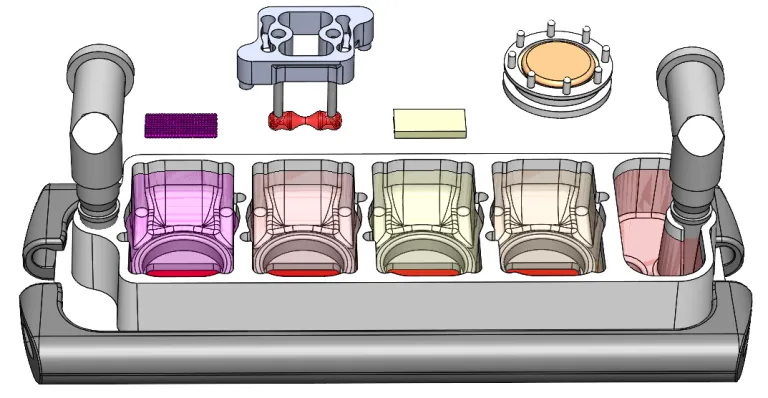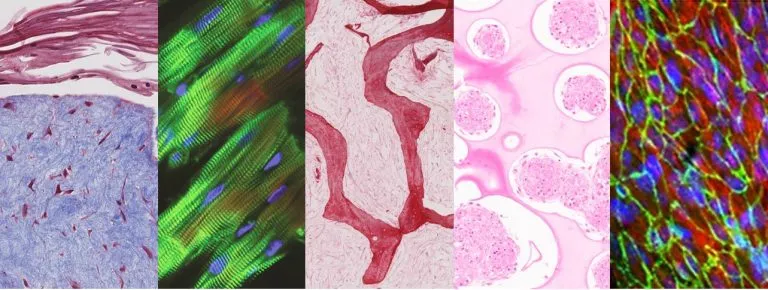
Engineering tissue has become an important part of simulating diseases and testing the efficacy and safety of drugs in human environment. A key obstacle for researchers is to figure out how to use multiple engineered tissues that can carry out physiological "communication" to simulate physical functions and systemic diseases - just as they are in the body. However, each engineering organization must be provided with its own environment so that a specific tissue phenotype can be maintained for weeks to months, which is the requirement of biological and biomedical research. Complicating the challenge is the need to connect tissue modules together to promote their physiological "communication", which is necessary for modeling conditions involving more than one organ system without sacrificing the environment of a single engineered tissue.
New plug and play multi organ chip tailored for patients
So far, no one can meet these two conditions. On Friday, a research team from Columbia University's School of engineering and Columbia University's Owen Medical Center reported that they had developed a human physiological model in the form of a multi organ chip, which consists of an engineered human heart, bone, liver and skin and is connected to circulating immune cells through blood vessel flow to allow the reproduction of interdependent organ functions. The researchers basically created a plug and play multi organ chip, which is only the size of a microscope slide and can be customized according to the patient's situation. As the development of disease and the response to treatment vary from person to person, this chip will eventually optimize the treatment of each patient. The study was published in [Nature Biomedical Engineering] in April( https://www.nature.com/articles/s41551-022-00882-6 ) 》In the magazine.

"This is a great achievement for us - we spent a decade conducting hundreds of experiments, exploring countless great ideas and building many prototypes. Now we have finally developed this platform and successfully captured the biological characteristics of organ interactions in vivo," said the project leader, University professor and Mikati foundation biomedical engineering Gordana vunjak Novakovic, Professor of medical science and dentistry.
Inspired by the human body
Inspired by the way the human body works, the team has established a human tissue chip system, in which they connect mature heart, liver, bone and skin tissue modules through recycled vascular flow, so that interdependent organs can communicate as in the human body. The researchers chose these tissues because they have significantly different origin, structural and functional properties and are adversely affected by cancer therapeutic drugs, which provides rigorous testing for the proposed method.

The lead author of the study Kacey ronaldson Bouchard, an associate researcher at vunjak Novakovic stem cell and tissue engineering laboratory, said: "Providing communication between tissues while preserving their respective phenotypes has always been a major challenge. Because we focus on using patient derived tissue models, we have to mature each tissue individually so that its function mimics the response you see in patients, and we don't want to sacrifice this advanced function when connecting multiple tissues. In the body, each organ maintains its own environment while carrying along The vascular flow of ring cells and bioactive factors interacts with other organs. Therefore, we choose to connect tissues through vascular circulation while preserving the niche of each tissue, which is a necessary condition to maintain its biological fidelity and imitate the connection mode of our organs in the body. "
The optimized organization module can last for more than a month
The team created tissue modules, each in its optimized environment and separated them from common vascular flow through a selectively permeable endothelial barrier. Each tissue environment can cross the endothelial barrier and communicate through vascular circulation. The researchers also introduced macrophage producing monocytes into the vascular circulation because they play an important role in guiding tissue response to injury, disease and treatment outcomes.
The ability to induce pluripotent stem cells (IPSC) from a small number of patients is proved by the study. Moreover, in order to prove that the model can be used for long-term research, the team maintained the tissue that had grown and matured for 4 to 6 weeks for another 4 weeks after connecting the tissue through vascular perfusion.
Using this model to study anticancer drugs
The researchers also want to demonstrate how the model can be used to study an important system in the human context and choose to study the adverse effects of anticancer drugs. They investigated the effects of adriamycin, a widely used anti-cancer drug, on the heart, liver, bone, skin and blood vessels. They showed that the measured effects reproduced clinical studies of cancer treatment using the same drug.
The team also developed a new multi organ chip computing model to mathematically simulate the absorption, distribution, metabolism and secretion of drugs. This model correctly predicts the process of doxorubicin metabolism to doxorubicin alcohol and its diffusion in the chip. In the future research on the pharmacokinetics and pharmacodynamics of other drugs, the combination of multi organ chip and calculation method provides a better basis for preclinical to clinical inference, and the drug development pipeline has been improved.
"While doing so, we can also identify some molecular markers of early cardiotoxicity, which is the main side effect limiting the wide use of the drug. Most notably, the multi organ chip accurately predicts cardiotoxicity and cardiomyopathy, which often requires clinical doctors to reduce the therapeutic dose of doxorubicin or even stop treatment," vunjak Novakovic said.
Cooperation of multiple institutions
The development of multi organ chip began with a platform with heart, liver and blood vessels, which is called heliva platform. Like vunjak Novakovic's biomedical research, cooperation is essential to complete this work. These collaborations include her laboratory, Andrea Califano and his systems biology team (Columbia University), Christopher S. Chen (Boston University) and Karen K. Hirschi (University of Virginia) expertise in vascular biology and engineering, Angela M. Christiano and her skin research team (Columbia University), Rajesh K. Soni of the proteomics core of Columbia University, And the computational modeling support of CFD Research Company team.
Many applications are carried out in the context of individualization for patients
The research team is currently using variants of this chip to study, all of which are aimed at the patient's personalized background: breast cancer metastasis; Prostate cancer metastasis; leukemia; Effects of radiation on human tissues; Effects of sars-cov-2 on heart, lung and blood vessels; Effects of ischemia on heart and brain; And the safety and effectiveness of drugs. The team is also developing a user-friendly standardized chip for academic and clinical laboratories to help use its full potential to advance biological and medical research.
Vunjak Novakovic added: "After a decade of research on the organs on the chip, we still found that by connecting millimeter sized tissues - beating myocardium, metabolizing liver, and functional skin and bone grown from the patient's cells, it is surprising that we can model the patient's physiological structure. We are excited about the potential of this method. It is for the study of systems related to injury or disease And will enable us to maintain the biological characteristics of engineered human tissues while maintaining their communication. One patient at a time, from inflammation to cancer! "